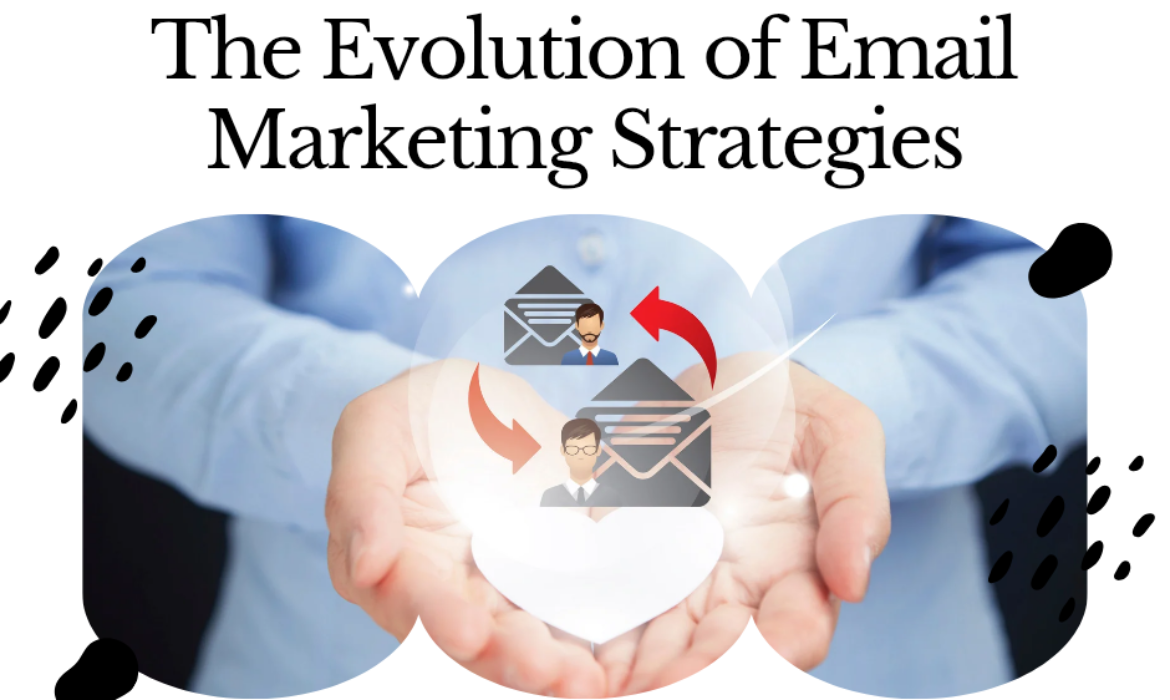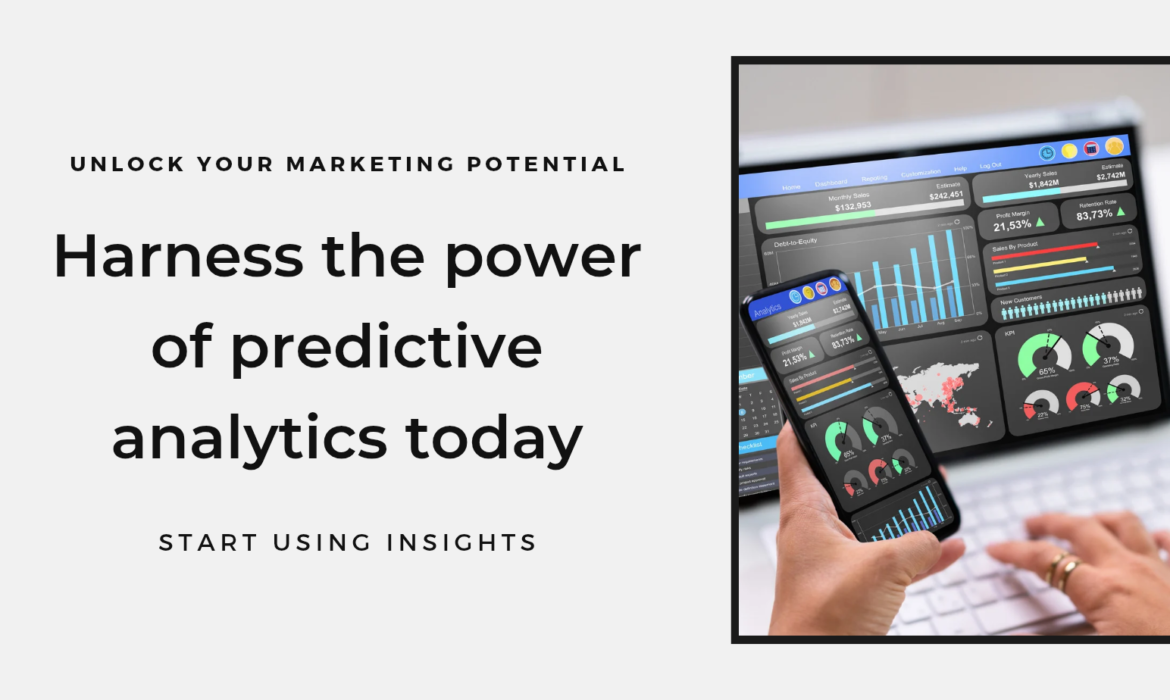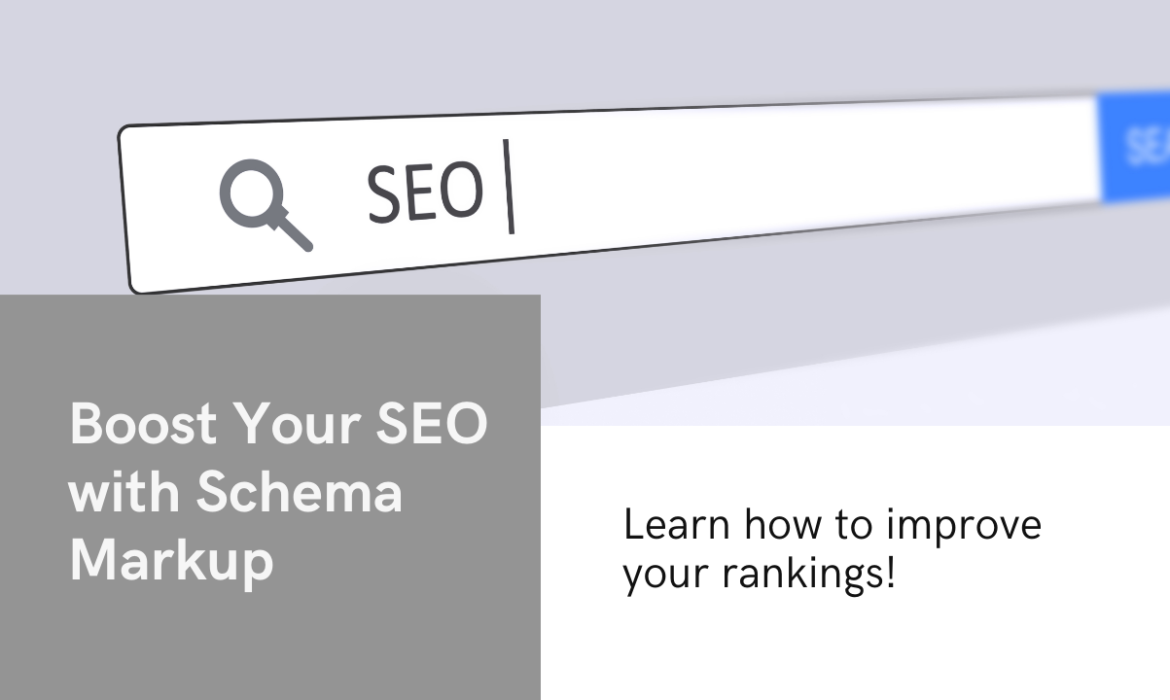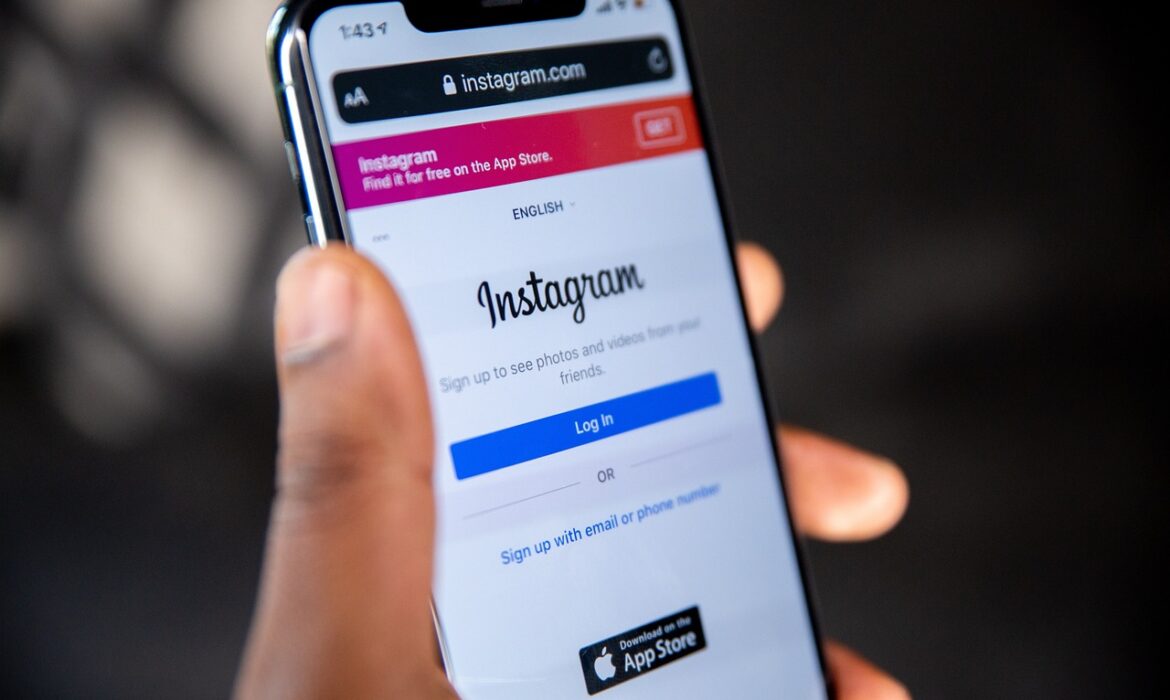081-4797-7173
The Evolution of Email Marketing: What’s Next?
Email marketing, a cornerstone of digital marketing, has evolved dramatically since its inception in the late 1970s. From simple text based messages to sophisticated, AI driven campaigns, email marketing has proven its resilience and adaptability in the face of emerging technologies and changing consumer behavior.
Today, with over 4.5 billion email users worldwide, the importance of email marketing continues to grow. But where is it headed next? In this article, we’ll explore the evolution of email marketing and what the future holds for this ever changing medium.
A Brief History of Email Marketing
1. The Early Days: Text Only Emails
In 1978, Gary Thuerk sent what is now considered the first ever email marketing campaign. This text only email was sent to 400 people and generated $13 million in sales for a computer company. Back then, email was a novel concept, and its potential as a marketing tool was largely untapped.
2. The HTML Revolution
The late 1990s brought significant advancements in email technology. Marketers began using HTML to create visually appealing emails with images, colors, and clickable links. This development marked the transition from plain text emails to visually rich newsletters, enhancing user engagement.
3. The Spam Era
As email marketing grew in popularity, so did the misuse of the medium. The early 2000s saw a surge in spam emails, leading to the introduction of regulations like the CAN SPAM Act in 2003. These laws aimed to protect consumers and restore trust in email communication.
4. The Personalization Era
By the 2010s, marketers began leveraging data to personalize email campaigns. Dynamic content, segmentation, and automated workflows allowed businesses to send tailored messages based on user behavior, demographics, and preferences. Personalization became the cornerstone of effective email marketing.
5. Integration with Marketing Automation
The rise of marketing automation platforms like Mailchimp, HubSpot, and ActiveCampaign enabled businesses to create complex email workflows. These platforms allowed for advanced segmentation, A/B testing, and real-time analytics, making email marketing more sophisticated and measurable.
Current Trends in Email Marketing
1. Mobile Optimization
With over 60% of emails being opened on mobile devices, responsive design is now a must. Marketers are focusing on creating emails that are easy to read and interact with on smaller screens
2. Interactive Emails
Interactive elements such as sliders, collapsible menus, and embedded videos are becoming more common. These features allow users to engage directly with the email without needing to visit a website.
3. AI and Predictive Analytics
AI is revolutionizing email marketing by enabling predictive analytics, automated content creation, and advanced segmentation. Tools like machine learning help marketers send the right message to the right person at the right time.
4. Privacy and Data Protection
With regulations like GDPR and CCPA, businesses are now more cautious about how they collect and use data. Transparency and ethical data practices are critical to maintaining trust with subscribers.
5. Hyper Personalization
Personalization has evolved from addressing recipients by their first name to delivering entirely customized experiences. This includes recommending products based on browsing history, sending location based offers, and using real time data to craft emails.
What’s Next for Email Marketing?
As technology continues to evolve, so will email marketing. Here are some trends and advancements we can expect to shape the future:
1. AI Driven Hyper Personalization
While personalization is already a cornerstone of email marketing, AI will take it to the next level. Advanced algorithms will analyze customer behavior, preferences, and interactions to deliver highly targeted emails. For example, AI could predict when a user is most likely to open an email and schedule delivery accordingly.
2. Voice Activated Email Interactions
With the rise of smart speakers and voice assistants, the way we interact with emails might change. Voice activated features could allow users to “read” their emails aloud, respond verbally, or even shop directly from an email using voice commands.
3. . Greater Integration with Omnichannel Marketing
Email marketing will become more integrated with other marketing channels. For example, an abandoned cart email could trigger a reminder on social media or a personalized SMS. This seamless integration will ensure a consistent brand experience across all touchpoints.
4. Predictive Content
AI driven predictive content will become more prevalent, allowing marketers to anticipate what type of content will resonate most with each subscriber. For example, an email could dynamically change its content based on the recipient’s browsing history or purchase behavior in real time.
5. Blockchain for Email Security
Blockchain technology could play a role in improving email security and authenticity. By verifying the sender’s identity and preventing spam or phishing attempts, blockchain could restore trust in email communication.
6. Focus on Accessibility
As inclusivity becomes a priority, email marketers will adopt strategies to make emails more accessible. Features like alt text for images, high contrast designs, and compatibility with screen readers will ensure emails reach a broader audience.
7. Sustainability in Email Marketing
As consumers become more environmentally conscious, the sustainability of digital marketing practices will come under scrutiny. Marketers may adopt “green email marketing” strategies, such as reducing email frequency and optimizing file sizes to lower energy consumption.
Tips for Preparing for the Future of Email Marketing
To stay ahead of the curve, businesses should adapt their email marketing strategies to align with emerging trends:
1. Invest in AI Tools:
Use AI-powered platforms to enhance personalization and optimize your campaigns.
2. Prioritize Mobile First Design:
Ensure your emails are fully responsive and provide a seamless mobile experience.
3. Experiment with Interactive Features:
Incorporate elements like polls, quizzes, and clickable buttons to boost engagement.
4. Focus on Data Privacy:
Be transparent about how you collect and use subscriber data, and comply with all relevant regulations.
5. Test and Optimize Constantly:
Use A/B testing and analytics to refine your strategies and improve campaign performance.
Conclusion
The evolution of email marketing has been nothing short of remarkable. From its humble beginnings as simple text messages to its current state as a data driven powerhouse, email marketing has continually adapted to meet the needs of businesses and consumers alike. As we look to the future, advancements in AI, interactivity, and integration with other technologies will further enhance the effectiveness of email marketing.
For businesses, the key to success will be staying informed about emerging trends and adopting innovative strategies that prioritize personalization, engagement, and trust. By doing so, email marketing will remain a vital tool for building relationships, driving conversions, and achieving long term growth in the digital age.
The Impact of 5G on Digital Marketing Strategies
The world of digital marketing is constantly evolving, and one of the most significant shifts on the horizon is the rollout of 5G technology. With 5G networks gradually becoming available across the globe, it promises to revolutionize various industries by delivering faster speeds, lower latency, and the ability to support more connected devices simultaneously.
But what does this mean for digital marketing strategies? How will 5G reshape the way businesses engage with their audiences? In this article, we will explore the impact of 5G on digital marketing strategies and what businesses need to do to stay ahead.
Understanding 5G and its Capabilities
Before diving into its impact on digital marketing, it’s essential to understand what 5G technology is and how it differs from its predecessors.
5G is the fifth generation of mobile network technology, following 4G LTE. While 4G was a significant leap forward in terms of speed and connectivity, 5G offers:
- Increased Speed: 5G is expected to deliver download speeds up to 100 times faster than 4G, with peak speeds potentially reaching 20 gigabits per second.
- Lower Latency: 5G’s latency, or the delay between sending and receiving data, is significantly reduced. This means near instantaneous communication, making real time interactions much more effective.
- Higher Capacity: 5G can handle millions of devices per square kilometer, which means the Internet of Things (IoT) can expand on a massive scale.
- Improved Reliability: The technology offers more stable connections, reducing the chance of dropped calls or interruptions.
With these capabilities, 5G will unlock new possibilities in digital marketing by providing faster, more reliable, and interactive experiences for consumers.
The Impact of 5G on Digital Marketing Strategies
1. Enhanced Mobile Experiences
With mobile traffic already dominating internet usage, 5G will further amplify the importance of mobile marketing. As more consumers rely on smartphones for browsing, shopping, and interacting with brands, businesses must prioritize mobile-optimized content. The faster speeds and reduced latency of 5G will allow businesses to offer richer, more immersive mobile experiences.
For example, marketers will be able to deliver high-definition videos, interactive elements, and AR (augmented reality) content on mobile devices without worrying about lag or buffering. This opens up new possibilities for marketers to create engaging and visually appealing content that captivates users’ attention.
What You Can Do: To take advantage of 5G, ensure that your website and marketing materials are optimized for mobile users. Implement mobile-first strategies and create content that uses rich media formats like 4K videos and interactive AR experiences.
2. More Interactive and Immersive Content
One of the most exciting possibilities of 5G is the ability to deliver immersive content experiences. Augmented reality (AR) and virtual reality (VR) have long been buzzwords in marketing, but the slow speeds and high latency of previous networks made it difficult to deliver these experiences at scale. With 5G’s faster speeds and lower latency, the barrier to implementing AR and VR marketing strategies will be drastically reduced.
For instance, brands can offer virtual try ons for fashion, beauty, and furniture products. Automotive companies could let customers take virtual test drives, while real estate agents might provide virtual home tours. These immersive experiences create more engagement by allowing customers to interact with products and services in a deeper and more meaningful way.
What You Can Do: Start experimenting with AR and VR technologies in your campaigns. Offer virtual product demonstrations, interactive brand experiences, or live streamed events with 360 degree views. The goal is to create experiences that engage users on a sensory level.
3. Improved Real Time Marketing and Personalization
5G will also enhance the effectiveness of real time marketing and personalization efforts. With ultra low latency, businesses can send and receive data in real time, enabling them to deliver more personalized and timely messages. For example, a retail store could send a personalized discount or promotional offer to a customer’s smartphone as they walk near the store, based on their location and past behavior.
Moreover, 5G’s ability to handle large amounts of data quickly will make it easier for businesses to process customer data in real time and adjust marketing campaigns on the fly. This increased speed and data processing power will allow for even more precise targeting and segmentation.
What You Can Do: Invest in real time analytics and personalization tools to deliver timely offers, updates, and content based on your audience’s behavior. Utilize location based targeting and triggers to provide a more tailored experience for each user.
4. Better Integration with the Internet of Things (IoT)
The Internet of Things (IoT) refers to the interconnected network of devices, such as wearables, smart home products, and other connected gadgets. 5G’s enhanced capacity and speed will support the growth of IoT, and as a result, it will open up new channels for digital marketers.
For instance, brands can use IoT devices to gather data about consumer behavior and preferences. Smart refrigerators could send reminders to users about grocery items they’re running low on, while wearables could track a user’s fitness progress and suggest relevant products or services. The ability to connect with users through various IoT devices will create more touchpoints for marketers to engage their audiences.
What You Can Do: Explore opportunities to integrate your marketing efforts with IoT devices. Consider creating smart products that can offer real time notifications or personalized recommendations, based on data gathered from connected devices.
5. Enhanced Video Content and Streaming
With 5G’s ultra fast download speeds, video marketing will become even more powerful. Consumers will be able to stream high definition video content on their mobile devices without buffering or lag. This means that marketers can focus on creating high quality video content, such as product demonstrations, tutorials, webinars, and live streaming events, without worrying about connectivity issues.
Moreover, the ability to stream and consume high quality video content on mobile devices will encourage more businesses to embrace video as a central part of their marketing strategy. Videos will become even more engaging and immersive, driving higher user engagement and conversion rates.
What You Can Do: Invest in video content creation and live streaming. Experiment with long form videos, short form video ads, and interactive live sessions that engage viewers in real time. The possibilities for video marketing will expand as 5G becomes widely available.
6. Enhanced Data Collection and Analytics
5G networks will provide a massive amount of data that can be used to fine tune digital marketing strategies. With faster speeds and higher capacity, businesses will be able to gather more comprehensive data on consumer behavior, preferences, and interactions across multiple touchpoints. This wealth of data can be used to optimize campaigns, improve targeting, and enhance the overall customer experience.
Additionally, the reduced latency will allow marketers to receive insights in real time, making it easier to make quick adjustments to campaigns and respond to customer needs as they arise.
What You Can Do: Invest in advanced analytics tools to harness the power of 5G data. Use this data to improve your targeting, refine your messaging, and deliver more personalized experiences to your audience.
Conclusion
The advent of 5G is set to revolutionize digital marketing by providing faster speeds, more reliable connections, and the ability to support more connected devices. This will open up new opportunities for businesses to engage their audiences through immersive content, real time personalization, mobile experiences, and much more.
To stay ahead of the curve, digital marketers should embrace the potential of 5G by investing in technologies such as AR, VR, and video content. They should also prioritize real time marketing, leveraging data and analytics to deliver more personalized and timely campaigns.
By adapting to the changing digital landscape, businesses can leverage 5G to create more engaging, effective, and data driven marketing strategies that will drive growth and success in the coming years.
How to Create Effective Lead Magnets to Grow Your Email List
In the world of digital marketing, one of the most valuable assets a business can have is an email list. Having direct access to an audience that has already shown interest in your brand is a powerful tool for increasing sales, building relationships, and growing your business. But how do you attract people to sign up for your email list? The answer is simple: lead magnets.
A lead magnet is something valuable that you offer for free in exchange for a person’s contact information, such as their email address. Lead magnets come in many shapes and sizes, from eBooks to free trials, and when used correctly, they can help you build an engaged email list that drives results.
In this blog post, we’ll dive into what makes an effective lead magnet and how you can create one to grow your email list.
What is a Lead Magnet?
A lead magnet is a marketing tool designed to attract potential customers by offering them something of value in exchange for their contact information. The idea is that by offering something useful or intriguing, people will be more willing to share their email addresses, allowing you to build your list and nurture those leads into long-term customers.
Lead magnets can take various forms, depending on your business goals and the audience you are targeting.
Common examples include:
- eBooks or guides
- Checklists or cheat sheets
- Webinars or video tutorials
- Free trials or product samples
- Discount codes or coupons
- Quizzes or assessments
An effective lead magnet provides something that your target audience wants or needs, and it should align with their pain points or interests. The value exchange should feel mutually beneficial.
Why Lead Magnets Are Important for Email List Building
Before diving into how to create effective lead magnets, it’s essential to understand why they are critical for growing your email list and, ultimately, your business.
1. They Attract Qualified Leads
Lead magnets aren’t just about collecting as many email addresses as possible; they’re about attracting the right people. By offering content or products that align with your target audience’s needs, you’re more likely to attract people who are genuinely interested in your brand. These leads are often more qualified and engaged, which makes them more likely to convert into paying customers down the road.
2. They Build Trust
Offering value upfront helps build trust with your audience. When someone sees that you’re providing them with something useful for free, they are more likely to trust your brand and feel comfortable giving you their contact information. A lead magnet that demonstrates your expertise and willingness to help can turn a casual browser into a loyal subscriber.
3. They Improve Conversion Rates
If done correctly, lead magnets can significantly improve your conversion rates. Since lead magnets offer high value, users are more likely to engage with them, sign up for your email list, and take the next steps in their buying journey. In fact, well executed lead magnets can increase conversion rates by 10% or more, depending on your niche and target audience.
How to Create Effective Lead Magnets
Creating a lead magnet that actually helps you grow your email list requires more than just offering a generic download. It needs to be targeted, valuable, and relevant to your audience’s specific needs. Here’s a step by step guide on how to create an effective lead magnet:
1. Understand Your Audience’s Pain Points
The first step in creating a valuable lead magnet is to understand your audience. What are their biggest challenges, desires, and questions? What problems do they need solutions to? Understanding their pain points will help you create a lead magnet that addresses a real need.
For example, if you run a fitness coaching business, your audience’s pain points might be weight loss, building muscle, or finding time to work out. A lead magnet like “10 Quick Workouts for Busy People” would directly address these challenges, offering real value.
2. Offer Something Specific and Actionable
The most effective lead magnets are specific and actionable. Instead of offering a broad, general piece of content like “Marketing Tips for Beginners,” consider narrowing it down to something more specific that offers immediate value, like “10 Social Media Marketing Strategies for Small Businesses.”
This level of specificity shows potential leads exactly what they can expect from your lead magnet and gives them the tools to take immediate action.
3. Make It Easy to Consume
Your lead magnet should be easy to digest and consume quickly. If it’s too long or complicated, people might lose interest before they finish. Offering a format that’s easy to access and use will increase the chances that people will download your lead magnet and engage with it.
For example, a 10 page PDF is typically easier to digest than a 50 page eBook. On the other hand, a checklist or cheat sheet might take just minutes to review, making it ideal for busy professionals who are looking for quick solutions.
4. Keep It Relevant to Your Core Offer
Your lead magnet should always align with what your business or product offers. This ensures that the leads you attract are highly qualified and likely to be interested in your products or services. If your business sells SEO tools, a lead magnet offering “A Beginner’s Guide to SEO” would be highly relevant.
Offering a lead magnet that’s directly related to your product or service also gives you an opportunity to nurture these leads through targeted follow up emails that guide them through the customer journey.
5. Design and Branding Matter
A lead magnet that looks professional and visually appealing is more likely to be taken seriously by potential leads. Ensure that the design of your lead magnet aligns with your brand’s identity, including colors, fonts, and logos.
A well designed lead magnet communicates professionalism and makes a stronger impression on your audience.
For example, a sleek and well organized eBook or guide can demonstrate that your brand cares about quality and attention to detail.
6. Make It Exclusive
People love the idea of getting access to something exclusive. Making your lead magnet feel like a limited-time offer or offering it only to those who sign up for your email list will encourage urgency. Additionally, promoting the idea that the content is something your audience can’t find elsewhere can increase its perceived value.
For instance, you might offer a “VIP Access” download that’s only available to your subscribers. You can also add a time sensitive element, like offering a limited time bonus for those who sign up within the next 24 hours.
Popular Types of Lead Magnets
Now that you know how to create an effective lead magnet, it’s time to decide which type will work best for your audience. Here are some popular types of lead magnets that can help you grow your email list:
1. eBooks and Guides
eBooks and guides are among the most common lead magnets. They work well because they allow you to provide in depth, valuable content that your audience can consume at their own pace. The key is to ensure that the content is actionable and not just fluff.
2. Checklists and Cheat Sheets
Checklists and cheat sheets are great for delivering quick, actionable value in a condensed format. They’re easy to create and even easier for your audience to use, making them a popular choice for lead magnets.
3. Webinars and Online Workshops
Webinars and online workshops provide a chance for you to engage with your audience in real time while offering valuable insights and information. They’re especially effective for B2B businesses and those in industries like education, coaching, or professional development.
4. Free Trials or Samples
If you offer a product or service, giving potential customers a free trial or sample can be a highly effective lead magnet. This allows them to experience the value of your product firsthand, increasing the likelihood that they’ll convert into paying customers.
5. Quizzes and Assessments
Interactive quizzes or assessments can be fun for users while providing valuable insights for your business. By offering a personalized result in exchange for their contact information, you create a compelling reason for people to sign up for your email list
Conclusion
Lead magnets are a powerful tool for growing your email list and nurturing potential customers. By offering value in exchange for contact information, you can attract qualified leads who are genuinely interested in your brand.
To create an effective lead magnet, start by understanding your audience’s pain points, offer something actionable and specific, and make sure it aligns with your core offer. Whether you choose an eBook, checklist, webinar, or quiz, the key is to create something that’s useful and valuable to your target audience.
Once you’ve created your lead magnet, promote it across your website, social media, and email campaigns to maximize its reach. With the right lead magnet in place, you’ll see your email list grow and your business thrive.
How to Use Predictive Analytics in Digital Marketing
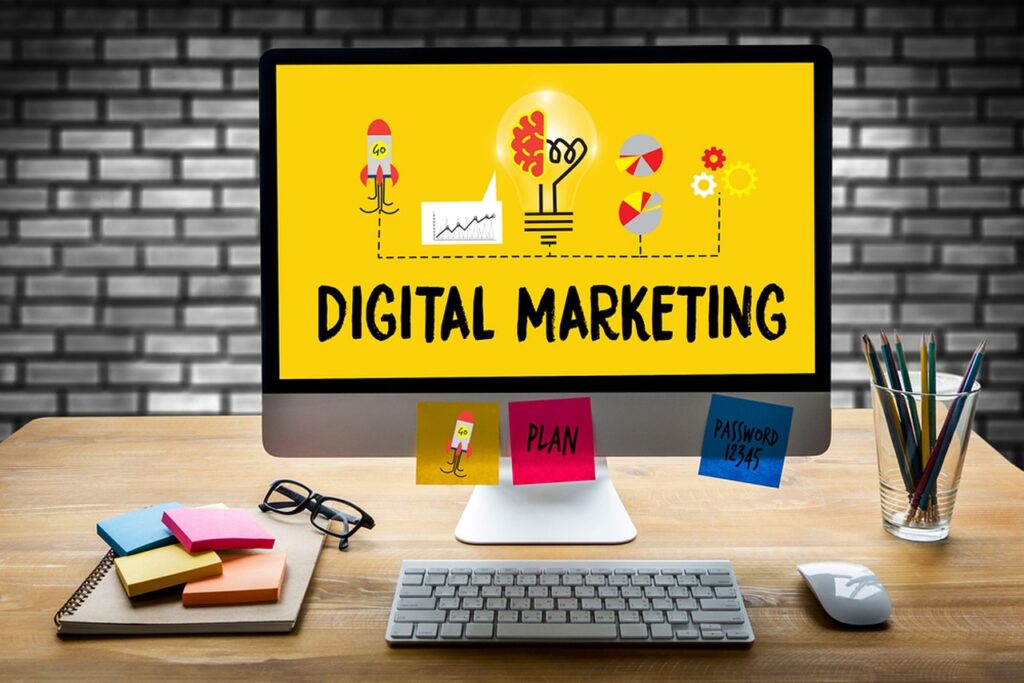
In today’s data driven world, businesses are constantly seeking ways to stay ahead of the competition by understanding customer behavior and anticipating market trends. Predictive analytics has emerged as a powerful tool in digital marketing, enabling brands to make informed decisions, improve customer experiences, and boost ROI.
This article delves into the concept of predictive analytics, its importance in digital marketing, and actionable strategies to implement it effectively.
What is Predictive Analytics?
Predictive analytics uses historical data, statistical algorithms, and machine learning techniques to identify patterns and predict future outcomes. In the context of digital marketing, it helps marketers anticipate customer behavior, optimize campaigns, and make data backed decisions.
Predictive analytics typically involves:
- Data Collection: Gathering relevant data from various sources such as websites, social media, and CRM systems.
- Model Building: Creating algorithms to identify patterns and trends.
- Forecasting: Using models to predict customer behavior, preferences, and future market trends.
- Forecasting: Using models to predict customer behavior, preferences, and future market trends.
Why is Predictive Analytics Important in Digital Marketing?
Predictive analytics empowers marketers to:
- Personalize Customer Experiences: By understanding individual preferences, brands can deliver tailored messages and offers.
- Optimize Campaigns: Anticipating which strategies will work allows marketers to allocate resources efficiently.
- Enhance Lead Scoring: Identify high potential leads and prioritize efforts accordingly.
- Reduce Churn Rates: Recognize signs of customer dissatisfaction and take proactive measures.
- Boost ROI: Focus on strategies that are likely to yield the best results.
How Predictive Analytics Transforms Digital Marketing
1. Customer Segmentation:
Predictive analytics enables marketers to segment their audience based on behavior, preferences, and purchase history. This allows for more targeted campaigns.
Example:
An ecommerce brand can use predictive analytics to identify customers likely to purchase during sales events and target them with exclusive offers.
2. Personalized Marketing Campaigns:
By analyzing customer data, predictive analytics helps create highly personalized marketing strategies. This includes recommending products, sending customized emails, or displaying relevant ads.
Example:
Streaming platforms like Netflix and Spotify use predictive analytics to recommend content based on user preferences and viewing/listening history.
3. Predicting Customer Lifetime Value (CLV)
Understanding the long term value of a customer helps businesses focus on high value clients. Predictive models can estimate CLV and guide retention strategies.
Example:
A SaaS company might prioritize retaining clients with high CLV by offering them exclusive benefits or personalized support.
4. Lead Scoring and Nurturing
Predictive analytics enhances lead scoring by identifying which leads are most likely to convert. This allows sales teams to focus on high priority prospects while nurturing others.
Example:
A B2B firm could use predictive analytics to analyze website activity, email engagement, and CRM data to score leads and tailor follow up actions.
5. Dynamic Pricing Strategies
Predictive analytics enables businesses to adjust pricing based on demand, competition, and customer behavior.
Example:
Airlines and ride hailing services use predictive analytics to forecast demand and implement surge pricing.
6. Identifying Trends and Market Opportunities
Analyzing data trends helps brands identify emerging markets, product opportunities, and consumer needs.
Example:
A fashion retailer might use predictive analytics to identify trending colors or styles for the upcoming season and adjust inventory accordingly.
How to Implement Predictive Analytics in Digital Marketing
1. Collect and Organize Data:
Data is the foundation of predictive analytics. Gather data from multiple sources, including:
- Website analytics (Google Analytics, etc.).
- Social media insights.
- Customer relationship management (CRM) tools.
- Email marketing platforms.
Organize this data in a centralized system for easy access and analysis.
2. Choose the Right Tools
Leverage predictive analytics software and tools to analyze data and build predictive models. Some popular tools include:
- Google Analytics 4
- Salesforce Einstein
- IBM Watson Analytics
- Tableau
- SAS Predictive Analytics
Ensure the tool you choose integrates seamlessly with your existing marketing stack.
3. Define Clear Objectives
Identify what you want to achieve with predictive analytics, such as:
- Increasing customer retention
- Improving ad targeting
- Enhancing email open rates
Having clear objectives will guide your strategy and ensure focused efforts.
4. Develop Predictive Models
Work with data scientists or use machine learning tools to build models that analyze historical data and forecast future trends. Common predictive models include:
- Regression Analysis: Predicting numerical outcomes (e.g., revenue growth).
- Classification Models: Categorizing data (e.g., identifying high risk customers).
- Clustering: Grouping similar data points (e.g., customer segmentation).
5. Test and Optimize
Before fully implementing your predictive analytics strategy, test your models on smaller campaigns to ensure accuracy. Continuously refine your models based on results.
6. Integrate Predictive Insights
Use the insights from predictive analytics to:
- Tailor marketing messages.
- Allocate budgets more effectively.
- Optimize ad placements and bidding strategies.
Challenges of Predictive Analytics in Digital Marketing
1. Data Quality
Poor quality data can lead to inaccurate predictions. Ensure your data is clean, complete, and up to date.
2. Complexity
Building predictive models requires expertise in data science and machine learning. Consider hiring skilled professionals or outsourcing to analytics firms.
3. Privacy Concerns
With growing data privacy regulations, ensure compliance with laws like GDPR and CCPA when collecting and using customer data.
Conclusion
Predictive analytics is revolutionizing digital marketing by enabling businesses to anticipate customer behavior, optimize campaigns, and achieve better results.
By leveraging this powerful tool, marketers can make data driven decisions, deliver personalized experiences, and stay ahead of the competition.
While implementing predictive analytics requires effort and investment, the long term benefits far outweigh the challenges.
Start incorporating predictive analytics into your digital marketing strategy today to unlock its full potential and drive your business forward.
The Benefits of Hosting Virtual Events for Brand Engagement
In today’s digitally connected world, virtual events have become a game changing tool for businesses. As more brands look for innovative ways to connect with their audiences, virtual events stand out for their ability to foster engagement, enhance reach, and create memorable experiences.
Whether it’s webinars, online conferences, product launches, or virtual trade shows, these events offer numerous benefits for businesses aiming to grow their brand presence and build stronger relationships with their audience. This blog post explores the advantages of hosting virtual events for brand engagement and provides insights into how they can elevate your marketing strategy.
1. Increased Accessibility and Reach
One of the primary benefits of virtual events is their ability to eliminate geographical barriers. Unlike in person events that are often limited to local attendees, virtual events can attract a global audience.
Why it matters:
- Anyone with an internet connection can join, making it easier to engage with a diverse audience.
- Your brand can reach potential customers in regions where it might not have a physical presence.
Example:
A SaaS company hosting a global webinar can attract attendees from different time zones, showcasing its expertise and expanding its customer base.
2. Cost-Effectiveness
Virtual events are significantly more cost effective than physical ones. Hosting a live event involves expenses such as venue rental, catering, travel, and accommodation for speakers and attendees.
Benefits for brands:
- Save on logistical costs.
- Allocate resources to enhance the virtual experience, such as high quality content and interactive tools.
Example:
An ecommerce brand can launch a new product through a virtual event, saving costs while still creating buzz and reaching a large audience.
3. Enhanced Brand Visibility
Virtual events provide an excellent platform to showcase your brand’s expertise and values. By hosting well structured events, you can position your brand as a thought leader in your industry.
How it works:
- Use branded visuals, logos, and messaging throughout the event.
- Share valuable content that aligns with your brand’s mission and expertise.
Example:
A fitness brand hosting virtual workout sessions or wellness webinars not only engages its audience but also reinforces its position as an authority in the industry.
4. Data Collection and Insights
One of the standout advantages of virtual events is their ability to collect detailed attendee data. With advanced analytics tools, brands can gain insights into audience behavior, preferences, and engagement levels.
Key metrics to track:
- Attendance rates.
- Duration of engagement.
- Questions asked during Q&A sessions.
- Downloads of shared resources.
How it helps:
Refine future marketing strategies.Personalize follow up communication.Identify high potential leads.
Example:
A B2B company hosting a virtual trade show can analyze which booths were most visited and tailor their outreach accordingly.
5. Improved Audience Engagement
Virtual events are packed with interactive features that encourage participation and engagement, such as:
- Live polls and surveys.
- Chat features for real time interaction.
- Gamification elements like quizzes and leaderboards.
- Breakout rooms for smaller group discussions.
Benefits for brands:
- Keeps the audience actively involved.
- Provides instant feedback on audience preferences.
Example:
A fashion brand hosting a virtual styling session can use live polls to let attendees vote on their favorite looks, fostering interaction and excitement.
6. Flexibility and Convenience
Virtual events offer unmatched convenience for both hosts and attendees.
Attendees can join from anywhere, avoiding travel and time constraints.
Hosts can easily adapt the format and schedule to fit their needs.
Why it works:
- Busy professionals are more likely to attend if the event is accessible and time efficient.
- Record sessions for on demand viewing, allowing audiences to engage at their convenience.
Example:
An educational institution hosting virtual open days can attract more prospective students by offering flexible viewing options.
7. Sustainability and Eco-Friendliness
With growing awareness about environmental impact, virtual events align with sustainable practices by reducing carbon footprints associated with travel and physical event logistics.
How it supports brands:
- Demonstrates your commitment to sustainability.
- Resonates with eco conscious audiences.
Example:
A tech company promoting its green initiatives can enhance credibility by hosting environmentally friendly virtual events.
8. Easy Scalability
Virtual events are easily scalable, accommodating varying audience sizes without significant logistical challenges.
Benefits:
- Start small and expand as your audience grows.
- Add features like multi language support or additional sessions for larger audiences.
Example:
A startup can host a small webinar initially and later scale it to a global audience as its brand gains recognition.
9. Increased ROI
The combination of reduced costs, higher engagement, and access to a larger audience often results in a better return on investment (ROI) for virtual events.
How it helps:
- Targeted content leads to higher conversion rates.
- Reusable content from the event can be repurposed for blogs, social media, and other marketing efforts.
Example:
An online retailer can generate sales by offering exclusive discounts during a virtual event and tracking purchases made through unique links.
10. Strengthening Community and Relationships
Virtual events are an excellent way to build a sense of community among your audience. Regular interactions foster loyalty and deepen relationships.
Strategies to achieve this:
- Host recurring events, such as monthly webinars or virtual meetups.
- Encourage attendee participation through Q&A sessions and feedback opportunities.
Example:
A nonprofit organization can use virtual events to connect donors and volunteers, share updates, and celebrate milestones.
Conclusion
Hosting virtual events is more than just a trend it’s a powerful strategy for brand engagement in today’s digital age. By leveraging the accessibility, cost effectiveness, and interactive features of virtual events, businesses can connect with their audiences on a deeper level, build brand loyalty, and achieve measurable results.
Whether you’re a small business or a global enterprise, virtual events offer the flexibility and scalability needed to thrive in a competitive market. Start planning your next virtual event today and experience the transformative impact it can have on your brand engagement efforts.
How to Use Pinterest for E-commerce Growth
Pinterest is a powerhouse platform for ecommerce businesses looking to boost visibility, drive traffic, and increase sales. Unlike other social media platforms, Pinterest acts as a visual search engine where users actively seek inspiration, ideas, and products. With over 400 million monthly active users, Pinterest offers an incredible opportunity for businesses to connect with potential customers who are ready to make purchasing decisions.
In this blog, we’ll explore how you can use Pinterest strategically to grow your ecommerce business, complete with actionable tips and insights.
1. Why Pinterest is Ideal for Ecommerce Growth:
Pinterest is unique because of its focus on discovery and intent. Here’s why it stands out for ecommerce:
High Purchase Intent: Pinterest users often browse the platform with a purpose whether it’s planning an event, redecorating their home, or shopping for gifts.
Longer Content Lifespan: Pins have a much longer lifespan than posts on Instagram or Facebook, often driving traffic for months or even years.
Visual Appeal: Ecommerce thrives on visual content, and Pinterest’s image focused format makes it perfect for showcasing products.
By understanding Pinterest’s strengths, you can align your ecommerce strategy to capitalize on these unique opportunities.
2. Optimize Your Pinterest Business Account:
Setting up and optimizing your Pinterest account is the first step toward success.
Convert to a Business Account
A business account gives you access to Pinterest Analytics and enables you to use features like Rich Pins and advertising.
You can sign up for free or convert an existing personal account into a business account.
Create a Branded Profile
Profile Picture: Use your logo or a professional image.
Business Name: Make it recognizable and include relevant keywords.
Bio: Write a compelling description of your brand, including what you offer and why it matters.
Claim Your Website
Claiming your ecommerce website boosts your credibility and ensures that Pins linked to your site show your profile picture and website URL.
3. Create and Organize Boards Strategically:
Boards are the foundation of Pinterest organization. They help users discover your content and showcase your expertise in specific areas.
How to Create Effective Boards:
Think Like Your Customers: What topics or themes are they interested in? For example, if you sell home decor, create boards like “Modern Living Room Ideas” or “DIY Home Decor.”
Use Keywords: Optimize board titles and descriptions with relevant keywords to improve discoverability.
Mix Products with Inspiration: Don’t just pin your products. Include complementary ideas or tips to provide value to your audience.
4. Design Eye Catching Pins:
The success of your Pinterest strategy heavily depends on the quality and appeal of your Pins.
Tips for Designing Pins:
Use High Quality Images: Ensure your images are sharp, bright, and visually appealing.
Vertical Format: Pinterest favors vertical Pins (2:3 ratio) for better visibility on mobile devices.
Add Text Overlays: Include catchy headlines or product descriptions directly on the image to grab attention.
Consistent Branding: Use your brand colors, fonts, and logo to maintain a cohesive look across all Pins.
Call to Action (CTA): Add phrases like “Shop Now,” “Learn More,” or “Discover More” to encourage clicks.
Tools for Designing Pins:
Canva
Adobe Spark
Pinterest’s built-in Pin creator
5. Utilize Rich Pins
Rich Pins automatically pull data from your website, adding extra information like product details, pricing, and availability directly to your Pins. This feature is a game changer for ecommerce because it makes your Pins more informative and actionable.
How to Enable Rich Pins:
1. Add metadata to your website (e.g., Open Graph or Schema.org markup).
2. Validate your Rich Pins using Pinterest’s validation tool.
3. Apply for approval.
Rich Pins increase engagement and make it easier for users to take action.
6. Leverage Pinterest SEO:
Pinterest operates as a search engine, so optimizing your content for SEO is crucial.
How to Optimize for Pinterest Search:
Use Keywords: Incorporate relevant keywords into Pin titles, descriptions, and board names.
Hashtags: Use a few targeted hashtags to improve discoverability.
Engaging Descriptions: Write compelling descriptions that include keywords and encourage users to click or save your Pins.
Alt Text: Add alt text to images on your website to improve their visibility when pinned.
7. Drive Traffic to Your Ecommerce Website:
Pinterest is a gateway to your online store. Ensure that your Pins encourage users to visit your site.
Tips for Driving Traffic:
Direct Links: Always link your Pins to the relevant product pages.
Landing Pages: Create dedicated landing pages for Pinterest traffic to improve conversions.
Promotions and Discounts: Use Pins to advertise special offers or discounts, and include CTAs like “Shop the Sale.”
8. Engage with the Pinterest Community:
Active engagement can help grow your Pinterest presence and attract more followers.
Ways to Engage:
Pin Consistently: Pin regularly to keep your content fresh and increase visibility.
Save Others’ Pins: Show your involvement in the community by saving relevant content from other creators.
Comment and Collaborate: Engage with your audience by responding to comments and collaborating with other businesses or influencers.
9. Run Pinterest Ads:
Pinterest ads can amplify your reach and bring in more traffic to your ecommerce site.
Popular Ad Formats for Ecommerce:
Promoted Pins: Boost existing Pins to reach a larger audience.
Shopping Ads: Showcase your product catalog directly on Pinterest.
Carousel Ads: Tell a story or feature multiple products in a single ad.
Pinterest ads are highly targeted and can deliver excellent ROI when done right.
10. Measure and Optimize Performance:
Use Pinterest Analytics to track the performance of your Pins and campaigns. Monitor metrics like impressions, clicks, saves, and website traffic. Use these insights to refine your strategy over time.
Conclusion
Pinterest is more than just a social platform it’s a visual discovery engine that can drive significant growth for your e-commerce business. By optimizing your profile, creating captivating Pins, leveraging SEO, and engaging with the community, you can turn Pinterest into a valuable sales channel.
Start implementing these strategies today to unlock the full potential of Pinterest for your ecommerce growth.
The Role of Schema Markup in Boosting SEO Rankings
In the ever evolving world of SEO, staying ahead of the competition requires leveraging every possible tool and strategy. One often overlooked but highly effective tool is schema markup. Schema markup is a powerful way to help search engines understand your content better, resulting in enhanced visibility, improved rankings, and higher click-through rates.
This blog will explore what schema markup is, why it’s essential for SEO, and how to use it effectively to boost your website’s rankings.
What is Schema Markup?
Schema markup is a form of microdata that you add to your website’s HTML to provide additional context about your content to search engines. Think of it as a translator that makes your website’s data easier for search engines to interpret.
Schema markup was created through a collaboration of major search engines Google, Bing, Yahoo, and Yandex under Schema.org. It helps search engines understand the relationships between different pieces of information on your website, enabling them to display richer and more relevant search results.
Why is Schema Markup Important for SEO
1. Enhanced Search Engine Understanding
Search engines use schema markup to better understand your content. This improved understanding allows them to display your website more accurately in search results, increasing its relevance to users’ queries.
2. Rich Snippets in Search Results
One of the most visible benefits of schema markup is the ability to generate rich snippets. Rich snippets display additional information, such as ratings, reviews, prices, and event dates, directly in the search results.
For example:
A product page with schema markup may show ratings, price, and availability.
A recipe page might display cooking time, ingredients, and reviews.
Rich snippets make your listing stand out and attract more clicks.
3. Increased Click-Through Rates (CTR)
By making your search results more visually appealing and informative, schema markup can significantly improve your click-through rates. Higher CTRs are a positive signal to search engines, potentially boosting your rankings further.
4. Voice Search Optimization
With the rise of voice search, schema markup plays a crucial role in providing direct answers to user queries. Structured data helps voice assistants like Google Assistant or Alexa deliver precise and relevant responses.

5. Local SEO Benefits
Schema markup is especially beneficial for local businesses. By using LocalBusiness schema, you can provide search engines with details like your address, phone number, opening hours, and customer reviews, improving your chances of appearing in local search results.
Types of Schema Markup
Schema markup can be applied to various types of content. Here are some of the most commonly used types:
1. Product Schema
Highlights key product details like price, availability, and reviews.
Example: E-commerce websites.
2. Local Business Schema
Displays business information such as location, contact details, and operating hours.
Example: Restaurants, clinics, retail stores.
3. Review Schema
Displays customer reviews and star ratings in search results.
Example: Online product reviews, services, or businesses.
4. FAQ
Schema Showcases frequently asked questions and answers directly in search results.
Example: Educational or service based websites.
5. Event Schema
Highlights event details like dates, times, and locations.
Example: Concerts, webinars, or workshops.
6. Recipe Schema
Displays cooking times, ingredients, and user ratings.
Example: Food and recipe blogs.
7. Article Schema
Optimizes articles and blog posts to appear in Google News or as featured snippets.
Example: News websites or blogs.
How to Implement Schema Markup
1. Identify Relevant Schema Types
Determine which schema markup best suits your website’s content. For example, if you run an e-commerce store, you might focus on Product and Review schemas.
2. Use Schema Markup Generators
Tools like Google’s Structured Data Markup Helper or third party platforms like Schema App and Merkle’s Schema Generator can simplify the creation of schema markup for your website.
3. Add Schema Markup to Your Website
Once the schema is generated, you can add it directly to your website’s HTML. If you’re using a CMS like WordPress, plugins like Rank Math or Yoast SEO can help implement schema markup without editing code.
4. Test Your Markup
Use Google’s Rich Results Test to verify that your schema markup is implemented correctly and eligible for rich snippets.
5. Monitor and Optimize
Regularly monitor your structured data performance in Google Search Console. Fix any errors or warnings to ensure your schema remains effective.
Best Practices for Using Schema Markup
Avoid Overloading:
Use schema markup where it makes sense, but don’t overuse it to avoid cluttering your code.
Focus on Accuracy:
Ensure the information provided in your schema markup matches the content on your website.
Stay Updated:
Schema.org frequently updates its library of schemas. Keep an eye on new types and properties to stay ahead.
Combine with Other SEO Strategies:
Schema markup is powerful but works best when combined with other SEO practices like keyword optimization, mobile friendliness, and fast page loading.
Examples of Schema Markup in Action
1. E-Commerce Store:
A store selling electronics uses Product and Review schemas to show star ratings, prices, and availability directly in search results.

2. Local Restaurant:
A restaurant implements LocalBusiness schema to display its address, phone number, and hours of operation.
Conclusion
Schema markup is a game changer for businesses looking to improve their SEO rankings and online visibility. By providing search engines with structured data, you can enhance how your content appears in search results, drive more traffic, and increase user engagement.
Implementing schema markup may require some effort, but the long term benefits make it well worth the investment. Start integrating schema markup into your SEO strategy today, and watch your website rise above the competition.
The Role of Marketing Automation in Scaling Campaigns
In today’s competitive digital landscape, businesses face the dual challenge of reaching larger audiences and managing their marketing efforts efficiently. Scaling campaigns manually can be both time consuming and error prone. This is where marketing automation becomes invaluable. By leveraging automation tools, businesses can streamline processes, personalize outreach, and achieve scalability without compromising quality.
This blog explores the role of marketing automation in scaling campaigns, its benefits, and how to implement it effectively.
What is Marketing Automation?
Marketing automation refers to the use of software and technology to automate repetitive marketing tasks such as email campaigns, social media posting, lead nurturing, and data analysis. These tools allow marketers to deliver personalized, timely, and efficient communication to their audiences at scale.
Popular marketing automation platforms include HubSpot, Marketo, ActiveCampaign, and Mailchimp, among others.
Why is Marketing Automation Important?
1. Saves Time and Resources
Automation eliminates the need for repetitive manual tasks, freeing up your team to focus on strategy and creativity. For example, instead of manually sending follow-up emails, you can set up workflows to handle this automatically.
2. Personalization at Scale
Consumers expect personalized experiences. Marketing automation enables you to deliver tailored messages to different segments of your audience based on their behavior, preferences, or demographics.
3. Improved Efficiency
Automation reduces human error and ensures consistent execution of campaigns, leading to better outcomes.
4. Enhanced Lead Nurturing
Marketing automation platforms help you engage with leads throughout their buyer journey, guiding them from awareness to conversion.
5. Scalability
Whether you’re targeting 1,000 or 100,000 potential customers, automation ensures that your campaigns remain effective and manageable as your business grows.
How Marketing Automation Helps Scale Campaigns
1. Email Marketing Automation
Email marketing is one of the most effective channels for nurturing leads and driving conversions. Automation allows you to:
Segment your audience based on behavior, interests, or purchase history.
Send personalized drip campaigns triggered by specific actions (e.g., signing up for a newsletter or abandoning a cart).
Schedule emails at optimal times for maximum engagement.
Example: An e-commerce brand can send automated cart abandonment emails with personalized product recommendations to bring potential customers back to complete their purchases.
2. Social Media Automation
Managing multiple social media platforms can be overwhelming. Automation tools like Buffer or Hootsuite help you:
Schedule posts across different channels.
Monitor mentions and engagement.
Analyze the performance of your content.
This ensures your social media presence remains active and engaging without requiring constant manual intervention.
3. Lead Scoring and Segmentation
Not all leads are equal, and marketing automation helps you prioritize the most promising ones.
Lead Scoring: Assign points to leads based on actions such as email opens, link clicks, or website visits.
Segmentation: Group leads into specific categories based on their behavior or demographics for targeted campaigns.
Example: A SaaS company can use lead scoring to identify high-value prospects and send them tailored offers or demos.
4. Multi-Channel Campaign Management
Marketing automation platforms allow you to manage and integrate campaigns across multiple channels email, social media, SMS, and more from a single dashboard. This ensures consistency and maximizes your reach.
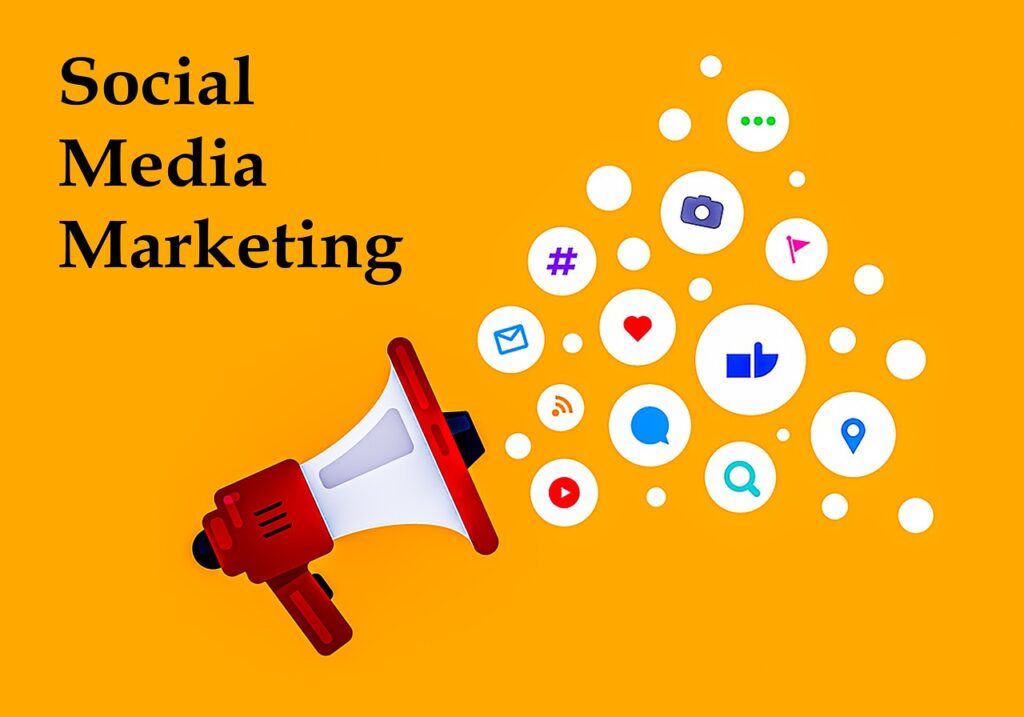
Example: A product launch campaign can be executed simultaneously through email, social media ads, and SMS reminders, all coordinated through automation.
5. Personalized Customer Journeys
Automation enables you to create personalized workflows that guide users through the buyer journey based on their interactions with your brand.
For instance:
A user who downloads an eBook might receive follow-up emails offering a webinar on a related topic.
Customers who make a purchase can be enrolled in loyalty or upsell campaigns.
These tailored experiences build trust and increase the likelihood of conversions.
6. Data Collection and Analysis
Marketing automation tools provide detailed analytics, helping you understand what’s working and what needs improvement. Key metrics include:
Open rates and click-through rates for emails.
Engagement levels on social media.
ROI of your campaigns.
With actionable insights, you can refine your strategies and optimize campaigns for better performance.
Benefits of Marketing Automation in Scaling Campaigns
1. Cost Effectiveness:
Automation reduces the need for a large team, allowing you to achieve more with fewer resources.
2. Consistency:
Ensures that your messaging and branding remain consistent across channels.
3. Faster Response Times:
Automated responses to user actions (e.g., welcome emails) improve user experience and engagement.
4. Higher ROI:
By targeting the right audience with the right message, automation leads to better conversion rates.
5. Flexibility:
Easily scale up your campaigns without significant changes to your workflow.
Best Practices for Implementing Marketing Automation
1. Define Clear Goals:
Know what you want to achieve lead generation, increased sales, improved engagement, etc.
2. Choose the Right Tools:
Select a marketing automation platform that aligns with your business needs and budget.
3. Segment Your Audience:
Use data to create highly targeted segments for more personalized campaigns.
4. Test and Optimize:
Regularly A/B test your automated campaigns to identify what works best.
5. Monitor Performance:
Continuously analyze metrics to measure success and identify areas for improvement.
Challenges of Marketing Automation and How to Overcome Them
1. Over Automation:
Relying too heavily on automation can make interactions feel impersonal. Balance automation with human touchpoints.
2. Data Management:
Ensure your data is clean and up to date for accurate segmentation and targeting.
3. Complexity:
Start small and gradually scale up your automation efforts to avoid overwhelming your team.
Conclusion
Marketing automation is a game changer for scaling campaigns efficiently and effectively. By automating repetitive tasks, delivering personalized content, and analyzing performance, businesses can save time, reduce costs, and achieve better results.
Whether you’re a small business looking to expand or a large enterprise aiming to optimize, marketing automation is an indispensable tool for growth. Start integrating automation into your campaigns today to unlock its full potential and stay ahead of the competition.
How to Effectively Use Instagram Stories for Brand Promotion
Instagram Stories have revolutionized the way brands interact with their audience. With over 500 million daily users, Stories offer an excellent opportunity for businesses to engage their followers, showcase their products or services, and drive conversions in a creative and dynamic way.
However, effectively using Instagram Stories requires more than just posting random content. It involves strategy, creativity, and consistency. In this blog, we’ll explore the importance of Instagram Stories for brand promotion and share actionable tips to maximize their impact.
Why Use Instagram Stories for Brand Promotion?
1. High Engagement
Instagram Stories are designed to be short, engaging, and interactive. Features like polls, quizzes, and stickers encourage audience participation, making Stories an ideal platform for direct engagement.
2. Increased Visibility
Stories appear at the top of the Instagram app, ensuring they’re one of the first things users see when they log in. This prime real estate gives your brand an excellent chance to grab attention.
3. Drive Immediate Action
With features like the “Swipe Up” link (available to accounts with over 10,000 followers or verified accounts), Stories make it easy for users to take action, such as visiting your website, shopping for products, or signing up for a service.
4. Show Authenticity
Unlike polished feed posts, Stories allow brands to share behind the scenes content, real time updates, and more casual, relatable moments, fostering a stronger connection with followers.
How to Use Instagram Stories Effectively for Brand Promotion
1. Plan Your Content Strategically
Randomly posting on Stories may not yield the desired results. Instead, develop a content strategy that aligns with your brand’s goals.
Define Objectives: Decide whether your goal is to increase brand awareness, drive sales, or engage with followers.
Create a Content Calendar: Plan content themes, such as product showcases, customer testimonials, or tutorials, to maintain consistency.
Use Analytics: Track your Story performance and refine your strategy based on metrics like reach, impressions, and engagement.
2. Use Visual and Creative Content
Instagram is a visually driven platform, so your Stories should be eye-catching and professional.
High-Quality Visuals: Use clear, high-resolution images and videos.
Brand Aesthetic: Maintain a consistent look and feel with your brand colors, fonts, and logos.
Dynamic Formats: Experiment with photos, videos, boomerangs, and GIFs to keep your Stories engaging.
3. Leverage Instagram’s Interactive Features
Instagram Stories offer several interactive elements to make your content engaging and participatory.
Polls: Ask your audience for their opinions on products or ideas.
Quizzes: Create fun and informative quizzes related to your brand or industry.
Questions: Use the “Ask Me Anything” sticker to answer customer queries or gather feedback.
Countdowns: Build anticipation for product launches or events with countdown timers.
4. Highlight Key Stories
Not all Stories need to disappear after 24 hours. Use the “Highlights” feature to save important Stories and organize them into categories on your profile.

Examples of Highlights Categories:
Products or services
Behind the scenes
Customer reviews
Tutorials and tips
Organized Highlights create a curated showcase of your brand’s offerings and values for new visitors to your profile.
5. Showcase Products or Services
Instagram Stories are perfect for promoting your offerings in a creative and non intrusive way.
Product Demos: Show how your products work or highlight key features.
Behind the Scenes: Share the process of making your products or preparing for an event.
Limited Time Offers: Use Stories to announce flash sales, discounts, or exclusive deals.
Add purchase links or stickers to make it easy for viewers to shop directly from your Stories.
6. Collaborate with Influencers
Influencers can significantly expand your reach and credibility. Partnering with influencers who align with your brand can expose your Stories to a broader audience.
Takeovers: Allow influencers to take over your Stories for a day to share their perspective.
Sponsored Content: Work with influencers to promote your products through engaging Stories.
7. Use Hashtags and Geotags
Adding hashtags and location tags increases the discoverability of your Stories.
Hashtags: Use relevant industry or campaign-specific hashtags to reach a wider audience.
Geotags: Tag your location to connect with local audiences or highlight specific areas relevant to your brand.
8. Post at Optimal Times
Timing matters when it comes to Instagram Stories. Post when your audience is most active to maximize visibility and engagement.
Use Instagram Insights to determine peak activity hours.
Experiment with different posting times to see what works best for your brand.
9. Add Call-to-Actions (CTAs)
Every Story should have a clear next step for viewers.
Examples of CTAs:
“Swipe up to shop now!”
“DM us for more details.”
“Click the link in bio for exclusive offers.”
Make your CTAs concise, actionable, and aligned with your objectives.
10. Analyze and Optimize
Regularly analyze the performance of your Instagram Stories to understand what works and what doesn’t.
Metrics to Monitor:
Views and reach
Tap forwards and tap backs
Exits and drop-offs
Engagement rates
Use this data to optimize your content strategy and improve future Stories.
Examples of Successful Brand Promotions Using Instagram Stories
Sephora: Shares beauty tutorials, product launches, and user generated content through engaging Stories.
Nike: Uses Stories to highlight athlete endorsements, new product releases, and inspirational content.
Starbucks: Promotes seasonal drinks and encourages engagement through polls and quizzes.
Conclusion
Instagram Stories offer a powerful way to promote your brand, engage with your audience, and drive conversions. By leveraging their interactive features, posting creative and consistent content, and analyzing your performance, you can make Stories a key component of your digital marketing strategy.
Start experimenting with Instagram Stories today and watch how they transform your brand’s online presence and customer relationships.
The Importance of Analytics in Measuring Campaign Success

In today’s data driven world, businesses have access to vast amounts of information that can be used to improve marketing campaigns and achieve better results. However, data alone is not enough. To truly understand whether your campaigns are successful, you need to analyze the data effectively. This is where analytics plays a pivotal role.Analytics helps you measure, evaluate, and optimize your marketing efforts, providing insights into what works, what doesn’t, and how you can improve. In this blog, we will explore why analytics is essential for measuring campaign success and how it can transform your marketing strategies.
What is Analytics in Marketing
Analytics in marketing refers to the process of collecting, analyzing, and interpreting data from various marketing channels to evaluate the performance of campaigns. By leveraging analytics, businesses can:
- Understand customer behavior
- Measure campaign performance against key metrics
- Identify areas for improvement
- Make data driven decisions to maximize ROI
Whether it’s a social media ad campaign, email marketing, or content marketing strategy, analytics provides actionable insights that guide better decision making.
Why Analytics is Crucial for Measuring Campaign Success
1. Establishing Clear Goals and Metrics
Every marketing campaign needs clear objectives, whether it’s increasing brand awareness, driving website traffic, or boosting sales. Analytics helps you define measurable goals and track them effectively.
For instance:
If your goal is to increase website traffic, you can track metrics like page views, unique visitors, and bounce rates.
For lead generation campaigns, metrics such as form submissions, downloads, or sign ups are key indicators of success.
Analytics ensures that you focus on the right metrics, aligning your campaigns with business objectives.
2. Understanding Audience Behavior
One of the greatest advantages of analytics is its ability to provide deep insights into your audience. You can learn:
Who your audience is: Demographics, location, interests, and more.
How they interact with your content: Time spent on pages, clicks, shares, and likes.
When they are most active: Ideal times to post or send emails.
These insights help you tailor your campaigns to meet the specific needs and preferences of your audience, increasing engagement and conversions.
3. Tracking ROI and Cost Efficiency
Analytics helps you calculate the return on investment (ROI) for each campaign. By comparing the cost of running a campaign to the revenue it generates, you can determine its profitability.
For example:
Track the cost per lead (CPL) or cost per acquisition (CPA) to evaluate paid ad campaigns.
Measure the revenue generated from email marketing campaigns versus the expenses incurred in creating and distributing them.
Analytics ensures that your marketing budget is spent wisely, focusing on strategies that deliver the best results.

4. Identifying High Performing Channels
With multiple marketing channels available social media, email, search engines, and more it’s essential to know which ones are delivering the best results.
Analytics tools provide a breakdown of performance across channels, allowing you to:
- Allocate resources to the most effective platforms
- Refine strategies for underperforming channels
- Diversify efforts to reach a broader audience
For instance,
if Google Analytics shows that your organic search traffic outperforms paid ads, you might invest more in SEO to maximize results.
5. Enhancing Campaign Optimization
Analytics is not just about tracking past performance; it’s also a tool for ongoing optimization. By analyzing data in real time, you can make adjustments to improve campaign outcomes.
For example:
Adjust ad copy or targeting in a PPC campaign based on click-through rates (CTR).
Refine email subject lines and content to improve open and click rates.
Test different landing page designs to reduce bounce rates and increase conversions.
This iterative process ensures that your campaigns are continuously improving, delivering better results over time.
6. Measuring Long Term Impact
Short term metrics like clicks and conversions are important, but analytics also helps you evaluate the long term impact of your campaigns.
For example:
Track customer lifetime value (CLV) to understand the ongoing contribution of new customers acquired through a campaign.Measure brand awareness through metrics like social media followers, mentions, and sentiment analysis.
These insights help you assess the broader success of your marketing efforts beyond immediate returns.
Key Analytics Tools for Measuring Campaign Success
To harness the full potential of analytics, you need the right tools.
Here are some of the most popular ones:
- Google Analytics: Ideal for tracking website performance and user behavior.
- Facebook Ads Manager: Offers detailed metrics for Facebook and Instagram ad campaigns.
- HubSpot: Comprehensive analytics for email marketing, content marketing, and CRM.
- SEMrush: Focuses on SEO and digital advertising performance.
- Hootsuite Analytics: Tracks social media engagement and growth.
Each tool provides unique insights, so choose those that align with your marketing goals.
Common Challenges in Using Analytics
While analytics is incredibly powerful, it’s not without challenges:
- Data Overload: Too much data can be overwhelming. Focus on metrics that matter to your goals.
- Misinterpreting Data: Ensure you understand the context behind the numbers.
- Delayed Action: Acting on insights too late can reduce their impact.
By addressing these challenges, you can make the most of your analytics efforts.
Conclusion
Analytics is an indispensable part of any successful marketing campaign. It allows you to measure performance, understand your audience, optimize strategies, and maximize ROI. Without analytics, your marketing efforts are like shooting arrows in the dark you might hit the target, but you won’t know how or why.
By incorporating analytics into your campaigns, you can make informed decisions, improve outcomes, and ensure your business stays competitive in an ever changing digital landscape. Start leveraging analytics today, and watch your marketing campaigns thrive like never before.

